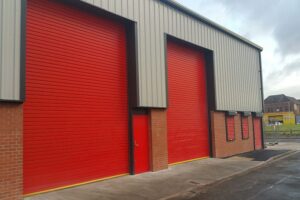Sheet metal manufacturing has become much popular among various producers due to its wide range of uses. Sheet metal is formed by working on metals and turning them into thin sheets of various dimensions. The wide ranges of application of these sheet metals are in cars, refrigerators, aeroplanes, ships, and others. Moreover, sheet metal production has gained acceleration due to economics changes where every manufacturer is trying to reduce its costs. In this article, we will be discussing the basics and several processes of manufacturing sheet metal.
Today, there are uncountable organizations which specialize in generating exceptional quality services to ensure that each of the Sheet metal manufacturing done at their place satisfies the requirements of all customers. However, what makes a company extremely advanced is the highly skilled and professional craftsmanship, great in industry tolerances, and the wide variety conversion of materials into sheet metals. Thus, if you are looking up for such a credible organization, here are a few things to have a look at!
The various types of materials and fabrication processes done
Every industry deals with numerous heavy metals and products. Their sole aim is not just to deliver a fine performance, but also to make sure that you get a variety in all you wish to choose. Thus, here are few of the major products that the officially recognized and credible organizations choose.
What is sheet metal manufacturing?
Sheet metal is a metal formed by industrial processes to manufacture thin flat pieces or sheets of metal. There are various thickness dimensions for different sheets, and they are either available in flat pieces or coiled strips. The thicknesses are gauged with a measuring tool that determines the sheet’s application in further manufacturing sectors.
The raw materials used for sheet metal manufacturing process are generally the outputs of the rolling process. In the rolling process, rollers are used to draw or extrude fine sheets from a block. In general, sheets of metals are solid as flat, rectangular sheets of standard sizes which are then formed again to extract specific sheet metals according to the requirement.
Basics processes of Sheet metal
There are various ways of producing sheet metal, and some of the processes are enlisted below, which are used densely across the manufacturing sectors due to convenience and efficiency:
- Bending is a commonly used sheet metal forming process. In this process, specific dies of appropriate sizes are used to bend small lengths of the metal. Most firms use repeated bending techniques to produce complex shapes as well.
- Roll forming is another technique of sheet metal manufacturing. The process involves a series of bending operations which has different workstations. Now, each of the rollers may have different lengths and orientation designed to attain a particular shape and dimension of the metal. The sheet is forced through the rollers, and the bending takes place.
- When sheet metal is revolved at high speed, the sheet deforms and takes a specific shape based on the operation, and the process is called spinning. The sheet is attached to a headstock spindle, and the tailstock supports the metal while spinning.
- Another popular method is a deep drawing which is used to make contours in sheet metal. The sheet metal is held on the die with extraneous force, and a punching force is applied to draw the metal to its plastic region so that it takes the shape of the die.
These are the processes through which sheet metal manufacturing is done so that the sheet metal can be applied to different purposes. There are various advantages of sheet metal parts as well. They have high tensile and compressive strength. Sheet metals have good dimensional accuracy, and relatively better surface finish as no cutting is done. However, machining of sheet metal parts needs to be done to attain higher surface finish. Moreover, the cost of production is less, and mass production can be carried out economically.

